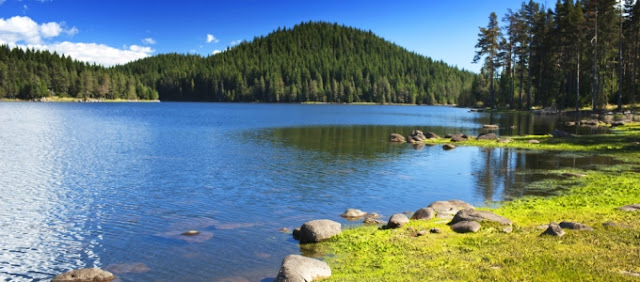 |
| Ninety seven per cent of all ozone depleting substances controlled by the global treaty known as the Montreal Protocol have been phased out |
New UNEP documentary examines its status
Paris, 16 September 2011 - The ozone hole is back in the news. In August the World Meteorological Organization (WMO) reported that signs of ozone depletion were again appearing over the Antarctic. A few months earlier, the Antarctic ozone hole was making headlines as scientists found that it was "creating rainfall in subtropical regions".
The problem of the ozone hole was supposed to be solved, wasn't it?
In fact, the closing of the hole in the world's stratospheric ozone layer is still many decades away and the effects and interactions of ozone depletion on climate change are just starting to be understood.
For these reasons, the OzonAction Programme of the United Nations Environment Programme (UNEP) decided to embark on an investigative journey through the history and science of the ozone layer, the actions taken to address this major environmental threat and the consequences both for the ozone layer and the Earth's climate system.
The resulting documentary, The Antarctic Ozone Hole: From Discovery to Recovery, examines the current state of the ozone layer, the effects of ozone depletion on climate change and the potential impact on communities worldwide.
Thid scientific journey, which had a worldwide screening today to mark the International Day for the Preservation of the Ozone Layer, is not a portrait of a planet in crisis but rather has experts from NASA, the British Antarctic Survey, Colombia University and other leading ozone researchers who offer hope and solutions to reducing ozone depletion. Indeed, they show that the Montreal Protocol, which covers ozone depleting substances (ODS), can deliver immediate climate benefits.
"The Montreal Protocol is a great example of what can be accomplished if nations, industry, technologists and scientists all combine to work on a problem," said Paul Newman from NASA's Goddard Space Flight Center.
One hundred and ninety-six countries have signed the Montreal Protocol, making it the first treaty of any kind to achieve universal ratification. All the world's governments are now legally obligated to phase out ODS under the schedules defined by the Protocol.
"The Montreal Protocol started off with baby steps. The countries took a decision and based on science, they changed the decisions. There were many amendments and adjustments, which finally made it so successful. There may be a lesson in that for the climate negotiations and climate decisions, too," said A.R Ravishankara from NOAA.
The International Day for the Preservation of the Ozone Layer or ("Ozone Day"), is an official UN day commemorating the date in 1987 on when the Montreal Protocol on Substances that Deplete the Ozone Layer was signed. Screenings of the film include a launch in Nairobi where UNEP has its headquarters, and at the Biosphère Environment Museum in Montreal, the city where the Protocol was signed. The video is available in English and French at
http://www.unep.org/ozonaction/antarctic
The international version will be provided to National Ozone Units for translation into local languages upon request. The narration of the French version is by Elisa Sednaoui, a young Franco-Italian actress and model.
For more information, please contact:
Nick Nuttall, Acting Director Division of Communications and Public Information/UNEP Spokesperson, nick.nuttall@unep.org + 254 73 363 2755
Moira O'Brien-Malone, Head, Communications, UNEP Paris, moira.obrien-malone@unep.org, +33 1 44 37 76 12 or mobile +33 6 82 26 93 73.
Anne Fenner, Communications, OzonAction Branch, UNEP, Paris anne.fenner@unep.org, +33 1 44 37 14 54 or +33678787882
(Source : United Nations Environment Programme)


























